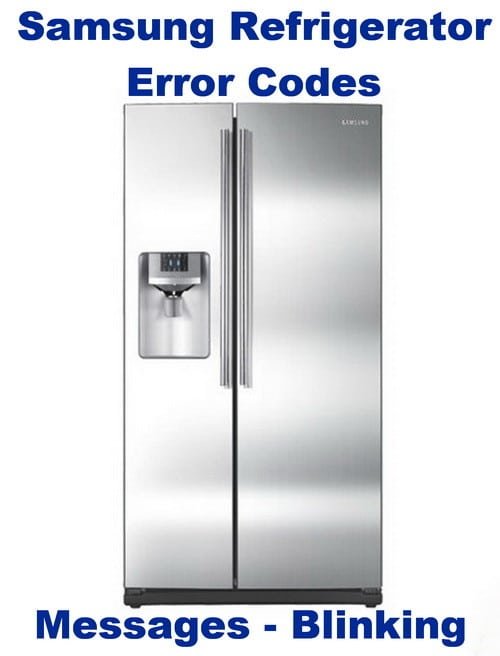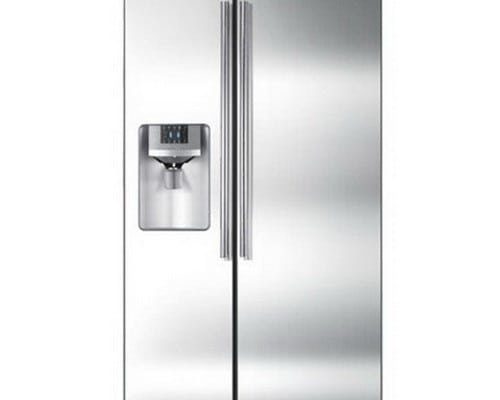
What’s neat about today’s refrigerators, much like our smartphones, is that they’re smart. They tell us when something’s wrong. But it’s not always easy to decipher what these messages mean, especially if you’re not a techie. So, what’s really behind this error code? Let me break it down for you in simple terms. It’s all about the defrost function, a crucial part of your refrigerator’s operation that keeps things running smoothly. When there’s a hiccup in this system, the “HE” (which stands for “Heater Error”) is triggered. Think of it as your refrigerator’s version of a “check engine” light.
Understanding the Defrost System and Heater Error
To get to the bottom of the “HE” error, we need to dive into how the defrost system works in your Samsung refrigerator. Imagine your fridge as a big cooler trying to stay as cold as possible. It’s like an air-conditioned room where the coils, acting as the air conditioners, tend to collect moisture over time. This moisture turns into frost. Now, frost build-up is the enemy here as it can block airflow and affect cooling efficiency. That’s where the defrost heater steps in—it periodically melts this frost away to keep things in top shape.
So, when you see that “HE” error, it’s indicating there’s a problem with this defrost heater. It’s like when your car’s heater stops working in the dead of winter—not ideal! Your fridge can’t defrost properly, leading to potential cooling issues. The reasons could vary; it might be a broken heater, a faulty thermostat, or even a sensor that’s gone rogue. Imagine being stuck with a clogged faucet—water just trickles through, right? The same happens here; frost builds up and disrupts the normal cooling function.
Here’s the deal: if this is left unchecked, your refrigerator might struggle to maintain the right temperature. You could start noticing things aren’t as cold as they should be, like your milk spoiling faster. So, catching this early can save you a lot of hassle down the line.
Common Causes of the “HE” Error Code
Alright, you might be wondering what exactly causes this error and how you can fix it. First up, the most common culprit is a failed defrost heater. This little component is tasked with the heavy lifting of melting frost. Like any hard-working part, it can burnout or just stop functioning one day. It’s not unlike a light bulb that just won’t turn on anymore.
Another suspect is a faulty defrost thermostat. This thermostat is like the brain of your defrost cycle, deciding when to heat things up and when to stop. If it’s giving the wrong signals, it’s as if your fridge decided to take an unscheduled break from work. Lastly, there might be an issue with the control board that’s supposed to regulate these defrost cycles. Picture your fridge as a concert with a conductor—without someone to lead, things go offbeat pretty quickly.
So, what should you do? It’s usually a good idea to check if your fridge is under warranty and then call in a professional. Tinkering with electrical components without the right skills could be risky. If you’re feeling adventurous and tech-savvy, you could tackle some parts yourself—but remember, safety first!
Steps to Take When Faced with the “HE” Error
Okay, so you’ve got this error staring you down, now what? First, perform a quick reset of your fridge. Sometimes, electronics just need a reboot—kind of like turning your computer off and on again. This might clear the error if it’s a temporary glitch. Unplug the fridge, wait a couple of minutes, and plug it back in. Keep an eye on the display to see if the error returns.
If that doesn’t work, it might be time to roll up your sleeves and inspect the defrost system components, specifically the heater and thermostat. Here’s where you might want to consult your fridge’s manual or look up some online resources or videos specific to your refrigerator model. Again, ensure the fridge is unplugged before you start poking around to avoid any nasty shocks.
For those preventive types, it’s always good to keep an eye out for any unusual noises or temperature fluctuations. Regular maintenance checks can catch issues before they snowball into full-blown problems. A little vigilance can save you a lot of trouble in the long run. Ultimately, it’s all about keeping your fridge running smoothly so it can keep doing its thing—keeping your food fresh and your life a little cooler.
